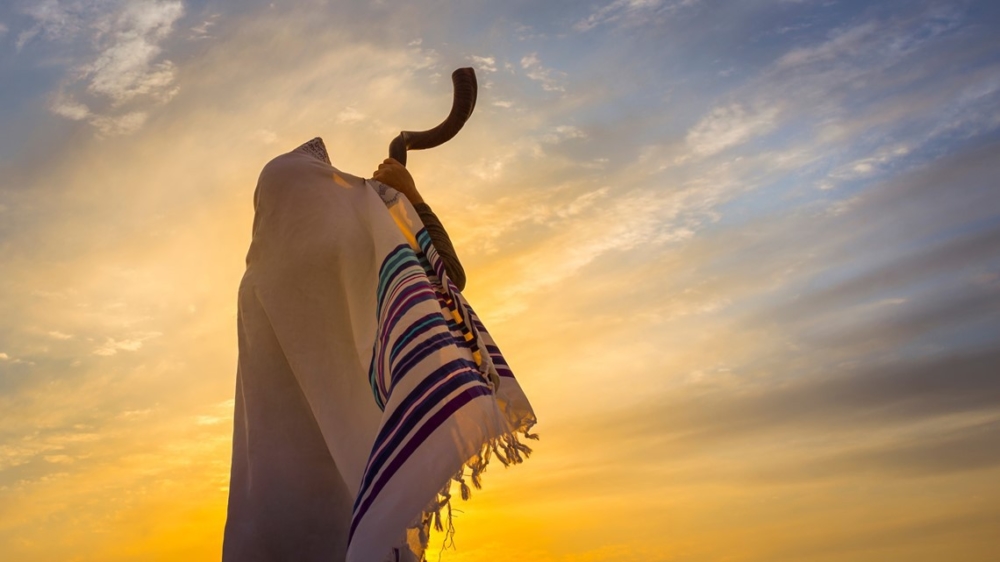Sunday at Sundown
Sources: Chabad-Lubavitch of the Shoreline; History.com; jewfaq.org.
Rosh Hashanah
The two-day holiday of Rosh Hashanah is the head of the Jewish year, the time when G‑d reinvests Himself in creation as we crown Him king of the universe through prayer, shofar blasts, and celebration.
What: It is the birthday of the universe, the day G‑d created Adam and Eve, and it’s celebrated as the head of the Jewish year.
When: The first two days of the Jewish new year, Rosh Hashanah 2022 begins at sundown on September 25th and continues through nightfall on September 27th
How: Candle lighting in the evenings, festive meals with sweet delicacies during the night and day, prayer services that include the sounding of the ram’s horn (shofar) on both mornings, and desisting from creative work.
As we read in the Rosh Hashanah prayers, each year on this day “all inhabitants of the world pass before G‑d like a flock of sheep,” and it is decreed in the heavenly court “who shall live, and who shall die … who shall be impoverished and who shall be enriched; who shall fall and who shall rise.”
It is a day of prayer, a time to ask the Almighty to grant us a year of peace, prosperity and blessing. But it is also a joyous day when we proclaim G‑d King of the Universe. The Kabbalists teach that the continued existence of the universe depends on G‑d’s desire for a world, a desire that is renewed when we accept His kingship anew each year on Rosh Hashanah.
In our prayers, we often call it Yom Hazikaron (Day of Remembrance) and Yom Hadin (Day of Judgement) since this is the day when G‑d recalls all of His creations and determines their fate for the year ahead.
Together with Yom Kippur (which follows 10 days later), it is part of the Yamim Nora’im (Days of Awe, or: High Holiday)
The Bible refers to the holiday as Yom Ha-Zikkaron, meaning the day of remembrance, or Yom Teruah, the day of the sounding of the shofar.
The shofar is a trumpet made from a ram’s horn and is an essential part of Rosh Hashanah and Yom Kippur. The sound of the horn serves as a call to repentance and a “reminder to Jews that God is their king,” according to History.com.
One of the most important observances of this holiday is hearing the sounding of the shofar in the synagogue. A total of 100 notes are sounded each day. There are four different types of shofar notes: tekiah, a 3 second sustained note; shevarim, three 1-second notes rising in tone, teruah, a series of short, staccato notes extending over a period of about 3 seconds; and tekiah gedolah (literally, “big tekiah”), the final blast in a set, which lasts 10 seconds minimum. The Bible gives no specific reason for this practice. One that has been suggested is that the shofar’s sound is a call to repentance. The shofar is traditionally not blown if the holiday falls on Shabbat, although the traditional synagogues that observe that restriction observe the second day of Rosh Hashanah and blow the shofar on Sunday.
Customs of Rosh Hashanah
After religious services are over, many Jews celebrate with a festive meal and other customs. Here are a few symbols and customs of Rosh Hashanah.
Apples and honey – Ancient Jews believed apples had healing properties and honey signifies the hope that the new year will be sweet.
Round challah – On Jewish holidays, Jews eat loaves of the traditional braided bread known as challah. On Rosh Hashanah, the bread is often baked in a round shape to symbolize the circle of life and the crown of God.
Tashlich – Some Jews practice this custom which means “casting off.” Casting off is the practice of throwing pieces of bread into a flowing body of water while reciting prayers. The bread symbolizes the sins of the past year.
L’shana tovah – This Hebrew phrase means “for a good year” and Jews will greet each other this way on Rosh Hashanah.
No work is permitted on Rosh Hashanah. Much of the day is spent in synagogue, where the regular daily liturgy is somewhat expanded. In fact, there is a special prayer book called the machzor used for Rosh Hashanah and Yom Kippur because of the extensive liturgical insertions for these holidays.

